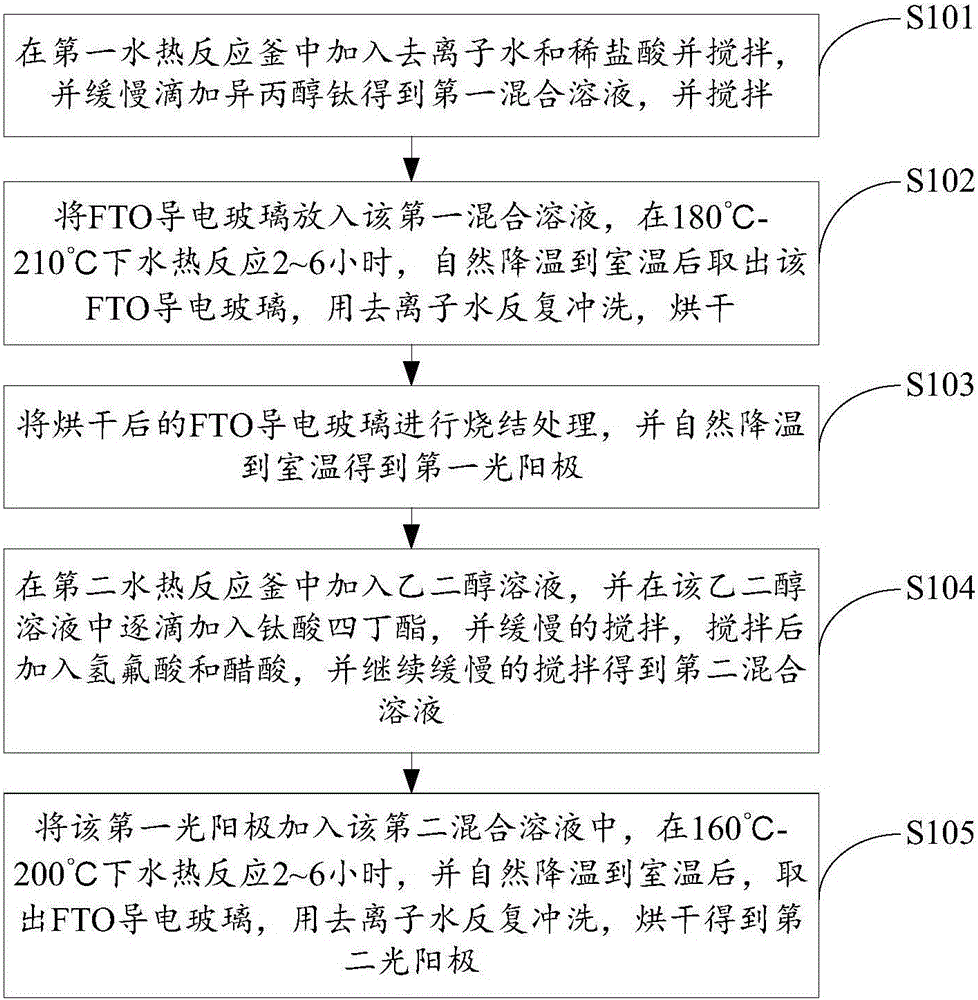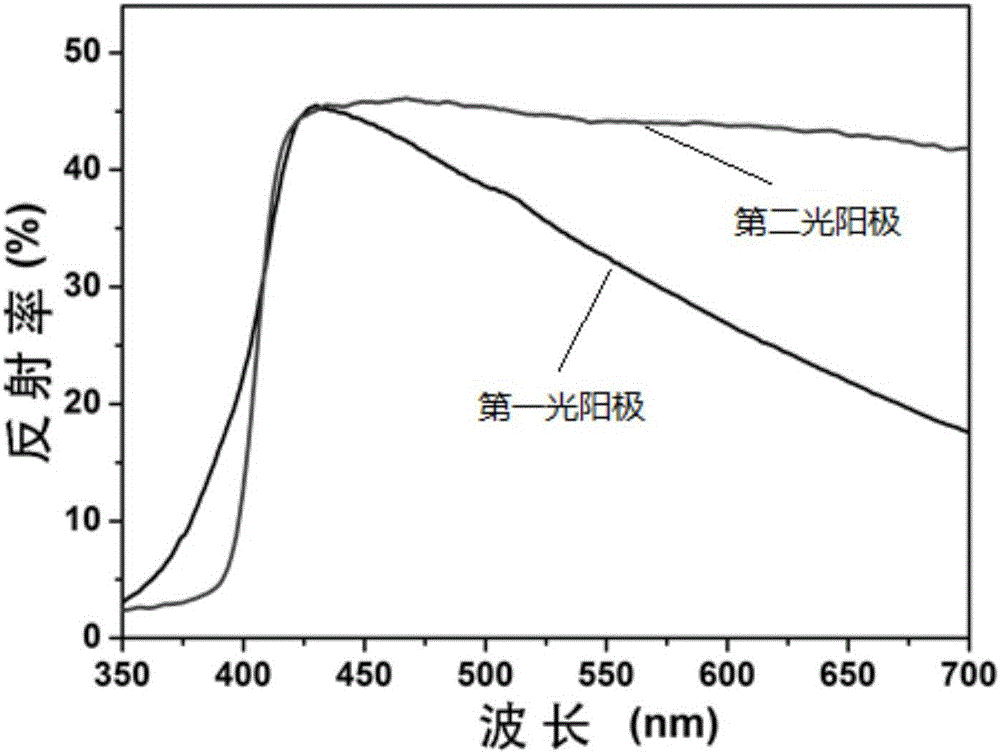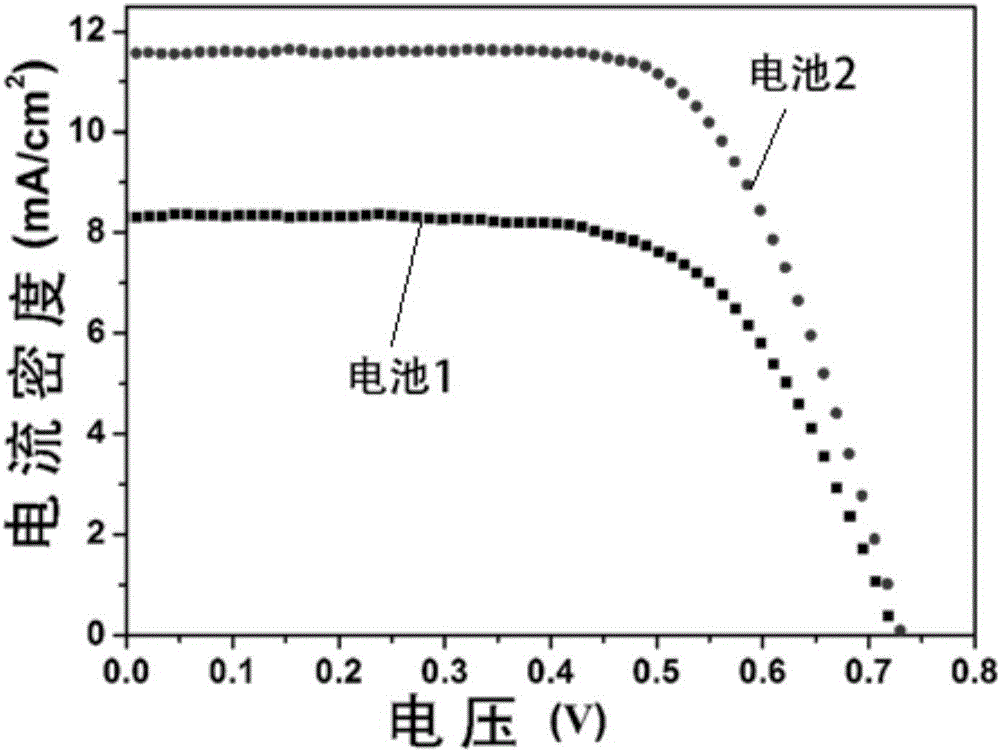Preparation method of photo-anode, photo-anode and dye-sensitized solar cell
A photoanode and conductive glass technology, applied in the field of solar cell manufacturing, can solve the problems of poor electron transmission characteristics, light scattering ability, and low specific surface area
- Summary
- Abstract
- Description
- Claims
- Application Information
AI Technical Summary
Problems solved by technology
Method used
Image
Examples
preparation example Construction
[0019] figure 1 A kind of preparation method of photoanode provided for the embodiment of the present invention, such as figure 1 shown, including:
[0020] S101. Add deionized water and dilute hydrochloric acid into the first hydrothermal reaction kettle and stir, and slowly add titanium isopropoxide dropwise to obtain a first mixed solution, and stir.
[0021] Wherein, the volume of the deionized water is 30 mL, the volume of the dilute hydrochloric acid is 30 mL, the concentration of the dilute hydrochloric acid is 36.5%-38%, and the volume of the titanium isopropoxide is 0.5 mL-0.9 mL.
[0022] S102. Put the FTO conductive glass into the first mixed solution, conduct a hydrothermal reaction at 180°C-210°C for 2-6 hours, take out the FTO conductive glass after cooling down to room temperature naturally, rinse it repeatedly with deionized water, and dry it.
[0023] S103 , sintering the dried FTO conductive glass, and naturally cooling down to room temperature to obtain a ...
PUM
| Property | Measurement | Unit |
|---|---|---|
| Volume | aaaaa | aaaaa |
| Volume | aaaaa | aaaaa |
| Volume | aaaaa | aaaaa |
Abstract
Description
Claims
Application Information
 Login to View More
Login to View More - R&D
- Intellectual Property
- Life Sciences
- Materials
- Tech Scout
- Unparalleled Data Quality
- Higher Quality Content
- 60% Fewer Hallucinations
Browse by: Latest US Patents, China's latest patents, Technical Efficacy Thesaurus, Application Domain, Technology Topic, Popular Technical Reports.
© 2025 PatSnap. All rights reserved.Legal|Privacy policy|Modern Slavery Act Transparency Statement|Sitemap|About US| Contact US: help@patsnap.com



